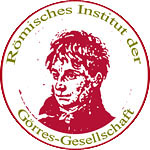Santa Maria Maggiore II: Pontifex Maximus
The old titles are returning. In 2018, Prof Claus Martin Girardet wrote a very illuminating essay in the Römische Quartalschrift on the title Pontifex Maximus of the Roman emperors. As the title of the essay suggests, the Christian emperor Gratian (d. 383) was the last emperor to bear the ancient Roman title Pontifex Maximus.
In an appendix, he talks about the title summus pontifex and summus sacerdos for the bishops. In fact, such titles began as early as the 3rd century. The restriction to the Roman bishop (pope) gradually began in the 6th century. It was not until the 12th century that it became an exclusive papal title. According to the Annuario Pontificio, St Francis also called himself Sommo Pontefice. The fact that Christians quickly adopted this title was simply because it was a biblically legitimised title. The Letter to the Hebrews already speaks of Christ the High Priest.
The title Pontifex maximus, on the other hand, is extremely rarely used for a bishop, apparently because the title was originally given to the emperor as the highest priest of the pagan cults. From the 7th century onwards, it entered the episcopal titulature. Rudolf Schieffer has dealt with the question of when the popes began to monopolise the title Pontifex Maximus: only from 1400! The official definition was made by the Council of Trent (1545-1563).
Although the title Pontifex Maximus is not an official title of the pope and therefore does not appear in the Annuario, it is very popular at court. The most recent example is the new cathedra in Santa Maria Maggiore, created for the Sommo Pontefice in the church that Sixtus III dedicated to ‘the people of God’ in the 5th century. Chiselled on the marble steps is the inscription: FRANCISCUS P.M.A.X - turning the P MAX into the first letters of four words ... Papae Memoriae Alterum Xenium e.g. ??
- Details
- Written by: Stefan Heid
- Category: Roman notes
 Römisches Institut der Görres-Gesellschaft
Römisches Institut der Görres-Gesellschaft







